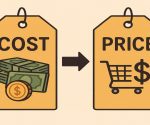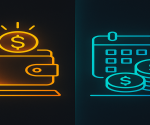India is one of the fastest-growing economies in the world. It has smart youth, strong industries, and a growing middle class. But behind this growth, the country faces many big problems that slow down progress. These problems affect the daily lives of people, especially those living in villages and small towns. The biggest issue is that the benefits of growth do not reach everyone equally. While some people live in big houses and use modern technology, many others still struggle for food, jobs, and basic needs. India can become a developed nation, but only if it solves these deep problems. The government has launched many schemes, but the impact is not enough. We must understand these challenges clearly. Only then can we take the right steps for a better future.
Economic Challenges in India
India faces many serious economic problems that slow down its progress. These issues affect people in both cities and villages. Some challenges are old, and some are new. Together, they stop India from growing fast and in a fair way. People lose jobs, prices rise, and many families stay poor. Even though India has strong industries and smart youth, these challenges create roadblocks in their success.
The most common economic challenges in India include unemployment, rising prices, low farm income, poor education, and lack of healthcare. Inflation makes daily needs costly. Farmers suffer from crop failure and low earnings. Young people cannot find good jobs even after studying. In villages, basic things like water, schools, and hospitals are still missing. These problems lead to inequality — where rich people keep getting richer and poor people continue to struggle.
To solve these problems, India needs better planning, more jobs, and strong public services. The government must support small businesses, train youth, and help farmers. Without fixing these economic issues, India cannot become a developed country. So, it is very important to understand each challenge in detail and work together to solve them. This is the only way to ensure growth for all people.

Unemployment — A Growing Concern
Unemployment means people want to work but can’t find jobs. In India, this problem is very serious. It affects both educated and uneducated people. Youth face the most trouble because they finish their studies but cannot find good jobs.
Why Unemployment is Rising
India has a large population. Every year, lakhs of students graduate. But job openings do not increase at the same speed. Private companies hire fewer people. Government jobs are very limited. Also, many people do not have the right skills needed by companies. This mismatch between education and job skills creates joblessness.
Some reasons include:
- Low industrial growth.
- Use of machines instead of human workers.
- Lack of investment in new sectors.
- Slow improvement in the rural job market.
Effects of Unemployment
Unemployment creates many more problems. When people stay jobless, they lose confidence. Families struggle to meet daily needs. Crimes increase. Many people migrate from villages to cities in search of work. This puts pressure on cities.
What Can Be Done
To solve unemployment:
- Schools must teach practical skills.
- The government should support small and medium businesses.
- More funds should go to agriculture-based jobs.
- India should promote startups among the youth.
Unemployment affects the nation’s future. So, fixing it is key to solving other economic challenges in India.
Inflation and Rising Prices
Inflation means a rise in prices of goods and services. When prices increase, people spend more money to buy the same things. In India, inflation affects food, petrol, cooking gas, medicine, and daily needs.
Why Prices Keep Rising
There are many causes of inflation in India. Some major ones are:
- High demand but low supply.
- Increase in petrol and diesel prices.
- Poor monsoon that reduces crop output.
- Higher taxes on goods.
- Weak supply chains in villages.
When transport cost increases, prices of all items also increase. Farmers suffer when seeds and fertilizers become costly. Middle-class families face trouble running homes with fixed incomes.
Impact on the Economy
Inflation hurts both buyers and sellers. People stop buying non-essential items. Sellers make fewer profits. Savings reduce. Banks raise interest rates to control inflation. But this also makes loans expensive.
What Should Be Done
- The government should reduce fuel taxes.
- India should increase food storage and supply.
- Support farmers to grow more crops.
- Improve transport and cold chains.
Rising inflation is one of the current economic challenges in India. Controlling it will improve life for all citizens.
Poverty and Inequality
Even though India has grown fast, poverty is still a big issue. Millions of people live without proper homes, food, clean water, and toilets. Inequality means some people are very rich while many are very poor.
Why Poverty Exists in India
There are many causes of economic problems in India related to poverty. Some key reasons are:
- Poor education and health facilities.
- Lack of regular income.
- Big gap between rural and urban life.
- Social factors like caste and gender inequality.
- Low wages in farm jobs.
In rural areas, most people depend on farming. But farming gives low income and is not always reliable. Many families earn less than ₹200 a day. This makes it hard to live with dignity.
Inequality in Cities
In cities, some people own big companies and make crores. But many work as maids, drivers, or daily labourers. These workers do not get job security, holidays, or health benefits. The rich get richer, and the poor stay poor. This increases the economic gap.
Steps to Reduce Poverty
To fix this issue:
- Give free education and health to all.
- Create more jobs under government schemes like MGNREGA.
- Raise minimum wages.
- Support women and backward classes with loans and training.
Poverty and inequality are serious economic challenges in India. We must fix them to become a truly developed country.
Slow Growth in Agriculture Sector
India depends a lot on agriculture. Almost 60% of people in rural India work in farming. But the income from farming is very low. Many farmers have loans and debts. Some even take extreme steps when crops fail.
Problems in the Agriculture Sector
There are many rural economic problems in India that come from the farming sector:
- Crop failure due to bad weather.
- Poor irrigation in many areas.
- Small land holdings give less profit.
- Lack of access to modern tools.
- Middlemen take a big part of farmer income.
Because of these problems, farmers earn very little. They cannot send their children to school or pay for health care. This keeps rural India poor.
How to Improve Farming
Some ways to solve farm issues:
- Use drip irrigation to save water.
- Give crop insurance to farmers.
- Sell products directly to consumers online.
- Train farmers in modern farming methods.
Agriculture must grow if we want to remove poverty and solve economic challenges in India.
Low Investment in Education and Health
Good education and health are the base of any strong economy. In India, many people still don’t get access to schools, doctors, or medicines. Rural and tribal areas face the most problems.
Problems in Education
Many schools do not have enough teachers or classrooms. Poor families send their kids to work instead of school. The system focuses more on marks than skills. Many students complete graduation but still lack basic job skills.
Health Challenges in India
India has very few doctors for its population. In villages, people walk long distances for medical help. Government hospitals often lack staff and medicine. Private hospitals are too costly.
These problems hurt productivity. Sick or unskilled people cannot grow the economy. Also, families spend all savings on treatment and remain poor.
Solutions
To fix these issues:
- Spend more on education and health in the budget.
- Build better schools and clinics in rural areas.
- Train teachers and health workers.
- Promote public health awareness.
Education and health investments will reduce other economic challenges in India in the long run.
Public Debt and Fiscal Deficit
India needs money to run its government, build roads, pay salaries, and help the poor. When income is less than spending, it borrows money. This creates debt.
Why High Debt is a Problem
India has rising public debt due to:
- High spending on subsidies.
- Big government projects
- Low tax collection.
- Loans from international banks.
The fiscal deficit in India means the gap between what the government earns and spends is big. This makes India borrow more money.
To fix this:
- The government should reduce wasteful spending.
- Increase tax collection without burdening the poor.
- Improve efficiency of public services.
Managing the fiscal deficit is key to solving long-term economic challenges in India.
Economic Challenges in India FAQs
1. What are the important economic challenges faced in India?
The main challenges are unemployment, inflation, poverty, low farm income, poor education, and rising debt.
2. What causes economic problems in India?
The main causes would be population explosion, poor planning, inequality, lack of job opportunities, and weak rural economy.
3. In what way do problems related to the rural economy affect growth in India?
The persistent poverty in the villages leads to an out-migration of people to cities, thereby causing pressure and imbalance in development.
4. What is the impact of economic challenges on the economy of India?
Slow economic growth results in increased poverty and loss of hope among youth, thus affecting long-term prosperity.
5. What steps are being taken by the government to overcome economic problems in India?
Schemes like MGNREGA, Ayushman Bharat, PM-KISAN, and Skill India aim at reducing poverty, improving employment, and enhancing the quality of life.


